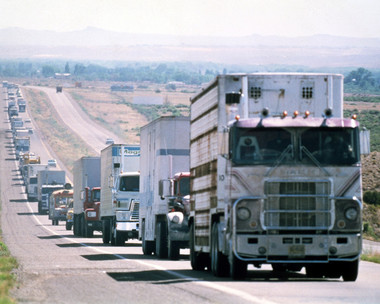It would seem that convoys of driverless trucks would be far easier to test and perfect than other autonomous vehicles. In the early stages of adoption, you could just put two human drivers in the first truck and have them alternate sitting behind the wheel. The trailing rigs could be programmed to follow suit of the lead vehicle. The destinations are also much easier to execute, as they’re predetermined and not changing and challenging like with taxis.
It’s estimated that eight million American jobs depend on the trucking industry (not only drivers but also support staff and workers at businesses frequented by truckers, like diners and such). Those will likely be gone in a few decades, not offset by savings to consumers realized as automation increases production and reduces prices.
The opening of Ryan Petersen’s Techcrunch article “The Driverless Truck Is Coming, and It’s Going to Automate Millions of Jobs“:
A convoy of self-driving trucks recently drove across Europe and arrived at the Port of Rotterdam. No technology will automate away more jobs — or drive more economic efficiency — than the driverless truck.
Shipping a full truckload from L.A. to New York costs around $4,500 today, with labor representing 75 percent of that cost. But those labor savings aren’t the only gains to be had from the adoption of driverless trucks.
Where drivers are restricted by law from driving more than 11 hours per day without taking an 8-hour break, a driverless truck can drive nearly 24 hours per day. That means the technology would effectively double the output of the U.S. transportation network at 25 percent of the cost.
And the savings become even more significant when you account for fuel efficiency gains. The optimal cruising speed from a fuel efficiency standpoint is around 45 miles per hour, whereas truckers who are paid by the mile drive much faster. Further fuel efficiencies will be had as the self-driving fleets adopt platooning technologies, like those from Peloton Technology, allowing trucks to draft behind one another in highway trains.
Trucking represents a considerable portion of the cost of all the goods we buy, so consumers everywhere will experience this change as lower prices and higher standards of living.•
Tags: Ryan Petersen

